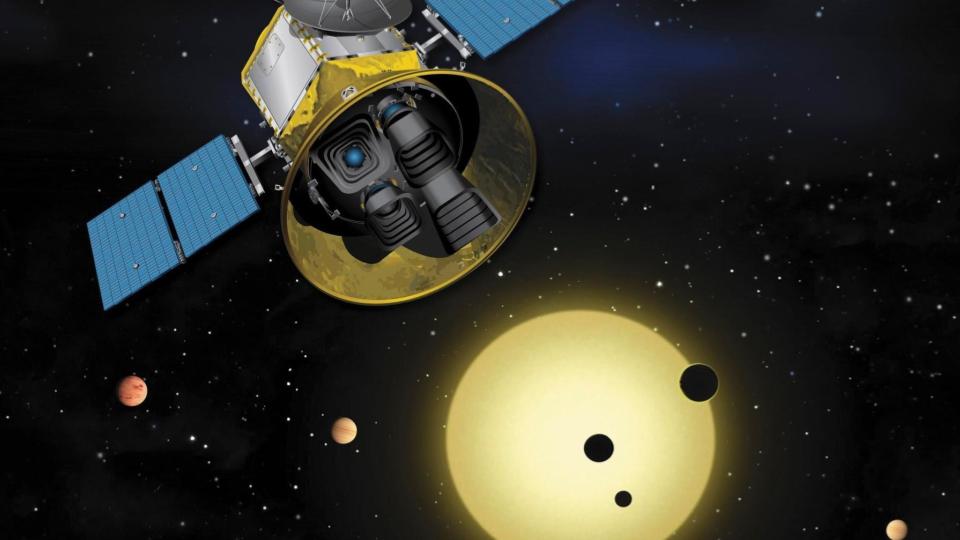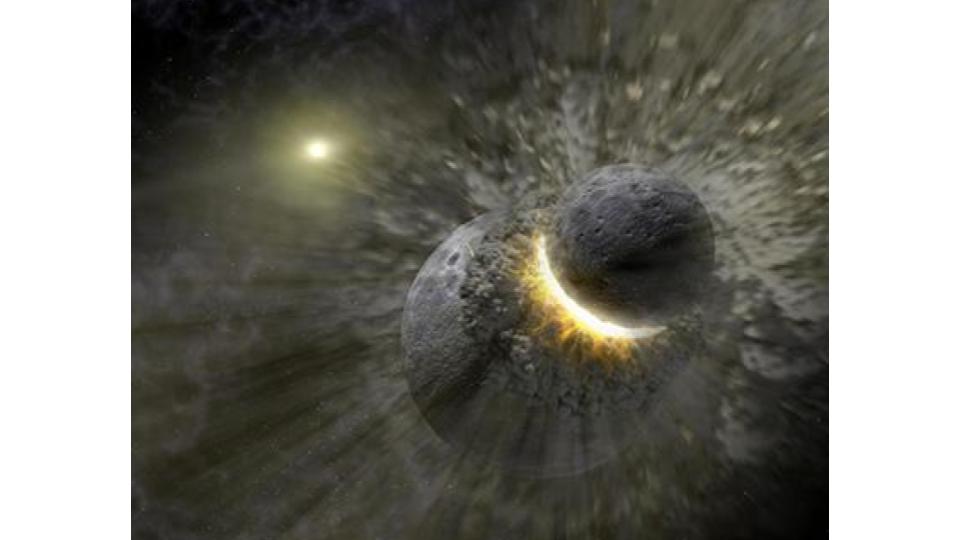In today’s news we find stars started earlier than thought, stars then don’t eat planets when expected, and put planets in places we never anticipated.
Today’s episode begins with the beginning of the universe. One of the things that we’ve been saying for years that JWST would do is figure out when stars first turned on. Well, as JWST has been delayed over and over, astronomers have gotten impatient and found ways to do JWST’s planned science without JWST. Today a team led by Eduardo Banados of the Max Planck Institute for Astronomy has published results showing that within 850 million years after the Big Bang stars had already had a chance to live and die. This team studied Quasar P183+05 and found in its light traces of an intervening cloud of gas that existed near this very distant object. As Quasar light passed through the distant cloud, the atoms in that cloud absorbed out quasar light, creating dark bands that could be used to study the composition of the cloud.
Now, when I say this quasar and cloud are distant, I mean distant. The studied light was emitted just 850 Million years after the Big Bang. This early in the universe is poorly understood, and we’re still trying to sort how the first generation of stars formed, lived, died. In looking at this distant gas cloud, this team hoped to place limits on the first generation of stars.
In general, the shortest lived and largest stars take a billion years to form, live, and die, but the first generation of stars may not have behaved like regular stars. In looking at this cloud that was less than a billion years old, the research team found traces of carbon, oxygen, iron, and magnesium: elements that could only be formed in stars. More importantly, the abundances of these elements wasn’t unlike what we see in modern star forming regions.
The base material of our universe was nothing more than hydrogen, helium, and minor amounts of lithium and beryllium. Stars, with their nuclear powered cores, generate everything else we see and after the first generation of stars, those heavy elements changed how stars were able to form. While the amount of heavier elements seen in this cloud is 800 times less than seen in the Sun, this small amount still means the first generation of stars as well as an additional generation of stars was able to enrich it, if only slightly. According to the press release, “The fact that this gas cloud in the very early universe already contains metals with modern chemical abundances poses key challenges for the formation of the first generation of stars.”
Specifically, this research raises the question of just how brief was the life of those first stars, and just how massive and short lived was that second? What this research does tell us is stars pretty much formed immediately after the formation of the Cosmic Microwave Background, and those first stars may be even harder to observe that we had previously thought.
——————–

- TESS reveals an improbable planet (Press Release)
- Revealed: exoplanet’s ‘improbable’ survival (Warwick)
From the beginning of stars, we now move to what should have been the end of a couple of planets. The TESS Mission has now studied two evolved stars with close in planets that should have been consumed when the stars expanded out during their red giant phase. Since we can now see those planets… clearly they weren’t eaten by the star. Using TESS’s extraordinarily precise brightness measurements of the stars, scientists were able to detect the slight oscillations that exist in these stellar atmospheres, and use them to inturn precisely measure the stars’ size and mass. Together, these measurements made accurate computer models possible, and from these models the team has learned that it is quite likely that these planets started much farther out, but were then drawn in through tidal interactions, the same way Mars moon Phobos gradually moves inward toward the red planet. This research highlights yet one more way that stars can move around their planet, and makes it clear that the solar systems we see today are just a snapshot of systems that will change in previously unimagined ways.
——————–

Solar Systems are turning out to be one of the harder things to understand. We don’t just struggle to figure out how planets end up snuggled up against old stars, we also struggle to figure out how they can end up next to young stars. One of the most perplexing thing that was discovered early in the study of exoplanets was the existence of massive stars both in tiny orbits near their stars, and in highly elliptical orbits that bring them very close to their stars. I number of possible explainations have been put forward over the years, and in a new paper in the Astrophysical Journal Letters, scientists led by Renata Frelikh put forward a new model that these massive planets are the result of massive collisions. This can both explain the mass of these worlds and how they end up in the orbits we see. In her computer models, Frelikh started each of hundreds of simulations with 10 different worlds in circular orbits with different planetary masses and total system masses. She then let these systems evolve over 20 million simulated years to see what kinds of collisions and other gravitational instabilities would appear. She found that planetary systems with the most initial mass produced the biggest planets and the planets with the highest final eccentricities. To get these results, they did need to make one assumption that usually not made – they allowed their solar systems to have multiple gas giants. While we see solar systems like this, it is so against what was expected that models have been slow to conform to this new normal. It turns out, this simple change allowed simulations to better represent our actual universe. The reminds us that we need to always work to replicate what is seen rather than what is expected.
———————
That rounds out our show for today.
Thank you all for listening. The Daily Space is produced by Susie Murph, and is a product of the Planetary Science Institute, a 501(c)3 non profit dedicated to exploring our Solar System and beyond. We are made possible through the generous contributions of people like you. If you would like to learn more, please check us out on patreon.com/cosmoquestx
Each live episode of the Daily Space is archived on YouTube. If you miss an episode here on Twitch.tv, you can find it later on youtube.com/c/cosmoquest. These episodes are edited and produced by Susie Murph.
We are here thanks to the generous contributions of people like you who allow us to pay our staff a living wage. Every bit, every sub, and every dollar committed on Patreon.com/cosmoquestx really helps. If you can’t give financially, we really do understand, and there are other ways you can help our programs. Right now, the best way you can help is to get the word out. Let you friends know, share our channel to your social media, or leave a recommendation. You never know what doors you are opening.
We really wouldn’t be here without you – thank you for all that you do.


 We record most shows live, on Twitch. Follow us today to get alerts when we go live.
We record most shows live, on Twitch. Follow us today to get alerts when we go live.